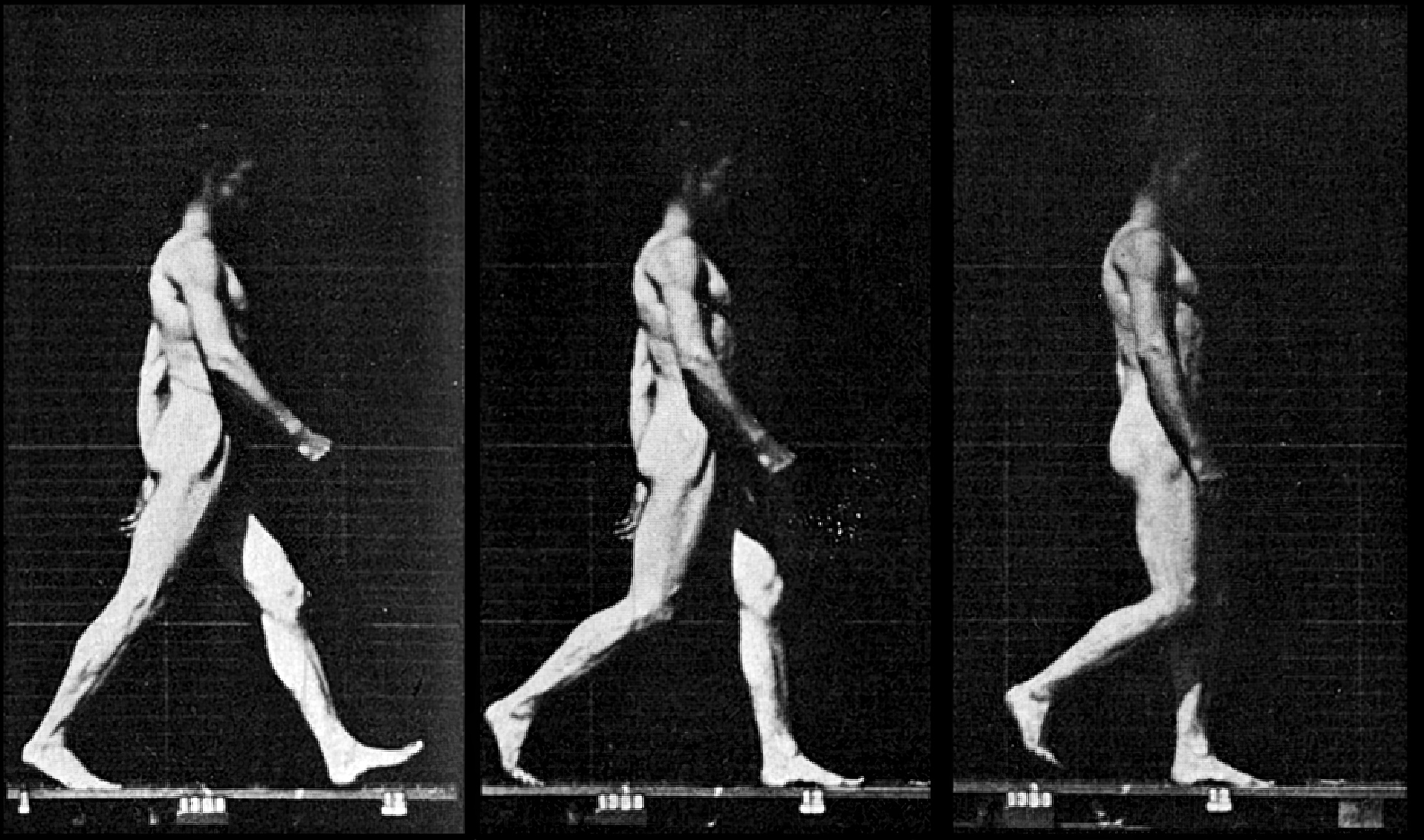“Optimizing walking controllers”
Conference:
Type(s):
Title:
- Optimizing walking controllers
Session/Category Title: Character animation
Presenter(s)/Author(s):
Moderator(s):
Abstract:
This paper describes a method for optimizing the parameters of a physics-based controller for full-body, 3D walking. A modified version of the SIMBICON controller [Yin et al. 2007] is optimized for characters of varying body shape, walking speed and step length. The objective function includes terms for power minimization, angular momentum minimization, and minimal head motion, among others. Together these terms produce a number of important features of natural walking, including active toe-off, near-passive knee swing, and leg extension during swing. We explain the specific form of our objective criteria, and show the importance of each term to walking style. We demonstrate optimized controllers for walking with different speeds, variation in body shape, and in ground slope.
References:
1. Alexander, R. M. 2003. Principles of Animal Locomotion. Princeton University Press.Google Scholar
2. Anderson, F. C., and Pandy, M. G. 2001. Dynamic optimization of human walking. J. Biomech. Eng. 123, 5, 381–390.Google ScholarCross Ref
3. Collins, S., Ruina, A., Tedrake, R., and Wisse, M. 2005. Efficient bipedal robots based on passive-dynamic walkers. Science 307, 1082–1085.Google ScholarCross Ref
4. Coros, S., Beaudoin, P., Yin, K., and van de Panne, M. 2008. Synthesis of constrained walking skills. ACM Transactions on Graphics 27, 5 (Dec.), 113. Google ScholarDigital Library
5. da Silva, M., Abe, Y., and Popović, J. 2008. Interactive simulation of stylized human locomotion. ACM Transactions on Graphics 27, 3 (Aug.), 82. Google ScholarDigital Library
6. Faloutsos, P., van de Panne, M., and Terzopoulos, D. 2001. Composable controllers for physics-based character animation. In Proc. SIGGRAPH 2001, ACM, 251–260. Google ScholarDigital Library
7. Grzeszczuk, R., and Terzopoulos, D. 1995. Automated learning of muscle-actuated locomotion through control abstraction. In Proc. SIGGRAPH 1995, ACM, 63–70. Google ScholarDigital Library
8. Grzeszczuk, R., Terzopoulos, D., and Hinton, G. 1998. NeuroAnimator: Fast neural network emulation and control of physics-based models. In Proc. SIGGRAPH 1998, ACM, 9–20. Google ScholarDigital Library
9. Hansen, N. 2006. The CMA evolution strategy: A comparing review. In Towards a New Evolutionary Computation. Advances on Estimation of Distribution Algorithms. Springer, 75–102.Google Scholar
10. Herr, H., and Popović, M. 2008. Angular momentum in human walking. J. of Exp. Biology 211, 467–481.Google ScholarCross Ref
11. Hodgins, J. K., and Pollard, N. S. 1997. Adapting simulated behaviors for new characters. In Proc. SIGGRAPH 1997, ACM, 153–162. Google ScholarDigital Library
12. Kim, J.-Y., Park, I.-W., and Oh, J.-H. 2007. Walking control algorithm of biped humanoid robot on uneven and inclined floor. J. Intelligent and Robotic Systems 48, 4 (Apr.), 457–484. Google ScholarDigital Library
13. Kudoh, S., Komura, T., and Ikeuchi, K. 2006. Stepping motion for a human-like character to maintain balance against large perturbations. In Proc. ICRA 2006, IEEE, 2661–2666.Google Scholar
14. Laszlo, J., van de Panne, M., and Fiume, E. 1996. Limit cycle control and its application to the animation of balancing and walking. In Proc. SIGGRAPH 1996, ACM, 155–162. Google ScholarDigital Library
15. Li, Y., Wang, W., Crompton, R. H., and Gunther, M. M. 2001. Free vertical moments and transverse forces in human walking and their role in relation to arm-swing. J. of Exp. Biology 204, 47–58.Google Scholar
16. Liu, C. K., Hertzmann, A., and Popović, Z. 2005. Learning physics-based motion style with nonlinear inverse optimization. ACM Transactions on Graphics 24, 3 (July), 1062–1070. Google ScholarDigital Library
17. Macchietto, A., Zordan, V., and Shelton, C. R. 2009. Momentum control for balance. ACM Transactions on Graphics 28, 3 (July), 80. Google ScholarDigital Library
18. Muico, U., Lee, Y., Popović, J., and Popović, Z. 2009. Contact-aware nonlinear control of dynamic characters. ACM Transactions on Graphics 28, 3 (July), 81. Google ScholarDigital Library
19. Muybridge, E. 1887. Animal Locomotion. U. of Pennsylvania.Google Scholar
20. Novacheck, T. F. 1998. The biomechanics of running. Gait and Posture 7, 1 (Jan.), 77–95.Google ScholarCross Ref
21. Pozzo, T., Berthoz, A., and Lefort, L. 1990. Head stabilization during various locomotor tasks in humans. Exp. Brain Res. 82, 97–106.Google ScholarCross Ref
22. Sharon, D., and van de Panne, M. 2005. Synthesis of controllers for stylized planar bipedal walking. In Proc. ICRA 2005, IEEE, 2387–2392.Google Scholar
23. Sims, K. 1994. Evolving virtual creatures. In Proc. SIGGRAPH 1994, ACM, 15–22. Google ScholarDigital Library
24. Sok, K. W., Kim, M., and Lee, J. 2007. Simulating biped behaviors from human motion data. ACM Transactions on Graphics 26, 3 (July), 107. Google ScholarDigital Library
25. Tedrake, R., Zhang, T. W., and Seung, H. S. 2004. Stochastic policy gradient reinforcement learning on a simple 3D biped. In Proc. IROS 2004, vol. 3, IEEE/RSJ, 2849–2854.Google Scholar
26. Tsai, Y.-Y., Lin, W.-C., Cheng, K. B., Lee, J., and Lee, T.-Y. in press. Real-time physics-based 3D biped character animation using an inverted pendulum model. IEEE Trans. on Visualization and Computer Graphics. Google ScholarDigital Library
27. van de Panne, M., and Fiume, E. 1993. Sensor-actuator networks. In Proc. SIGGRAPH 1993, ACM, 335–342. Google ScholarDigital Library
28. van de Panne, M., and Lamouret, A. 1995. Guided optimization for balanced locomotion. In Proc. CAS 1995, EG, 165–177.Google Scholar
29. Wampler, K., and Popović, Z. 2009. Optimal gait and form for animal locomotion. ACM Transactions on Graphics 28, 3 (July), 60. Google ScholarDigital Library
30. Witkin, A., and Kass, M. 1988. Spacetime constraints. Computer Graphics (Proc. SIGGRAPH 88) 22, 4 (Aug.), 159–168. Google ScholarDigital Library
31. Wooten, W. L., and Hodgins, J. K. 1996. Simulation of human diving. Computer Graphics Forum 15, 1 (Feb.), 3–13.Google ScholarCross Ref
32. Yin, K., Loken, K., and van de Panne, M. 2007. SIMBICON: Simple biped locomotion control. ACM Transactions on Graphics 26, 3 (July), 105. Google ScholarDigital Library
33. Yin, K., Coros, S., Beaudoin, P., and van de Panne, M. 2008. Continuation methods for adapting simulated skills. ACM Transactions on Graphics 27, 3 (Aug.), 81. Google ScholarDigital Library





